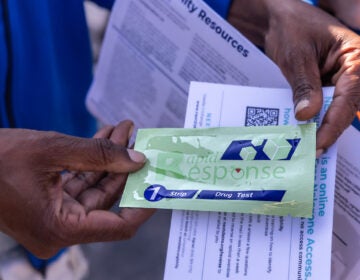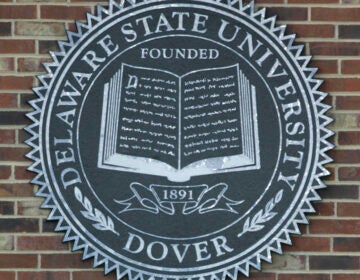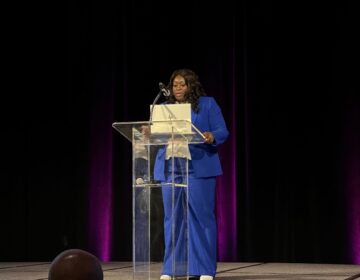Some advice for the new owners of the Newark Post
 Photo via ShutterStock) " title="shutterstock_5275243" width="1" height="1"/>
Photo via ShutterStock) " title="shutterstock_5275243" width="1" height="1"/>
(Photo via ShutterStock)
Essayworks contributor Doug Rainey provides his thoughts on the recent sale of Chesapeake Publishing to the Adams Publishing Group.
Here are Doug’s thoughts:
The sale of the Newark Post, the Cecil Whig and other Chesapeake Publishing sites have been greeted with cautious optimism.
In March, the papers and their associated websites were snapped up for an undisclosed sum by the Adams Publishing Group of Minneapolis.
The approximately three dozen newspapers of Chesapeake Publishing are located in three areas: a cluster in the Chesapeake Bay region; Athens, Ohio – the picturesque home of the University of Ohio; and the Great Lakes/North Woods area of northern Minnesota and Wisconsin.
While little information is available, it is known that APG is owned by the family of Stephen Adams, 76, a Warren Buffett-like figure who seems to be good at spotting opportunities in areas such as recreational vehicle services, wineries, and outdoor sign companies.
Adams has ties to Minnesota, and it is possible that the presence of Chesapeake Publishing in that state had something to do with the decision.
The closely-held ownership of APG, along with Midwestern business values, will prevent the turmoil that we have seen among the millionaire owners of the Philadelphia Inquirer and Daily News, who seem destined to sell their holdings, perhaps out of Delaware’s Chancery Court.
Who is Adams?
Adams, who is listed as a billionaire in some quarters, keeps a low profile and operates no publicly-traded companies that require financial holdings disclosures.
In the tradition of Warren Buffett, Adams holds on to companies, but based on the scant information available, he seems more likely to sell than the so-called “Sage of Omaha.” Buffett, as you might know, purchased dozens of newspapers and shows no signs of selling them.
Encouraging signs related to the sale continued when it was learned that the management style of APG will differ from the centralized set-up of the previous proprietor, Texas-based American Consolidated Media.
ACM was bankrolled by Maquarie, an Australian financial service company. Maquarie llater turned over the keys to ACM’s lenders, but the publishing company still faced a crushing debt load and the need to invest in new computers and information technology systems. This was especially true in its home region of Texas and Oklahoma.
As a result, ACM had no choice but to consolidate its operations; it did not help that ACM went through a number of CEOs, the latest change coming last fall. Also troubling was a tendency to micro-manage non-news activities.
ACM, to its credit, made modest investments in digital technology and training. However, these efforts were hampered by layoffs, which were needed to make ends meet, but held back progress in the move to the digital world.
Good news, bad news
David Fike – who headed the Chesapeake group for ACM and was recently named president of the Adams Publishing Group’s Chesapeake Region – said in an interview that Adams’ regional executives will have more control over operations.
This is more good news, as the former owner sometimes released hastily-conceived corporate programs that were often rolled out with little warning and disappeared equally fast.
But like all newspaper companies remaking themselves into digital media enterprises, the road ahead will be rocky. Newspaper readership will continue to decline and advertisers will face an array of choices beyond the hometown paper.
Navigating that environment will require a deft touch, a return to the basics of customer service and the abandoning of a “good enough” manufacturing mentality that has hobbled print in general.
Navigating the new environment
Based on my 18 years as a print and digital journalist at both the old and the ACM-managed Chesapeake, I’m providing my thoughts about what actions will be needed to navigate this new environment. These thoughts apply to all legacy newspaper companies.
Drive down printing costs as far as possible, to the point of selling or spinning off the printing operation. As someone who loves to hear the roar of the press, this is painful to write,but printing issues occupy too much time for a company making the switch to digital. There is also the issue of presses that are simply too old. Customers want precision work, and it takes a new press to get to that point, which would be a waste of money unless the owner has extremely deep pockets.
Examine costs of content management and accounting systems. If a system is too old, throw it out and don’t try to graft new technology that moves content from web to print. Find the lowest-cost way to transfer content, and be wary of vendors who offer “soup to nuts” systems but do not have up-to-date design or technology.
Put the customer first. Make sure that an advertisement, whether on the web or in print, is done quickly and efficiently. Have the ability to produce an ad in an a matter of hours and make sure that the work is conducted with a local vendor or in-house at a low cost.
Invest in training. One of the good things ACM did was appoint an online guru who helped move the company down a digital path and perhaps paved the way for the sale to Adams.
Transform company offices into community meeting rooms where the public can drop-in and perhaps even spend a little time at the computer.
Invest in video, live-streaming and other technologies. There is no reason why your town’s high school football and basketball games can’t be streamed: The costs are surprisingly low, and sponsors can also be obtained.
Don’t go overboard on apps and other features unless advertisers bankroll the costs. Smartphone screens are already overloaded with choices; it is better to ensure that your mobile design is first-rate.
Cultivate bloggers as contributors and allow them to provide a wide range of voices. Don’t look at online contributors as competition, but as part of a community.
Watch the geographic distribution of your news coverage. Make sure not to cover one town at the expense of another. Readers know and often vote with their feet.
If the paper has a “paywall” that charges for content, make sure you are not simply moving print content online. Videos, photo galleries and other tools can be drawing cards.
Have a local presence in the form of someone who represents the media company at civic and business affairs within the community. Currently, many papers operate with one over-worked editor and perhaps a reporter. No one has time to play a role in civic activities.
Experiment. If an idea fails, move on and try something else, but don’t get stuck in a rut.
Seek ideas from staff on better practices and procedures. Make sure that a path exists for the idea to be adopted throughout the company and reward the staff member who came up with the idea.
It is easy to tell someone else how to spend his or her money, but I think these steps will allow community media companies to survive and perhaps even thrive in coming years. In the end, it will come down to whether APG invests in people and technology, or simply rides the pony until the end of the trail.
Doug Rainey spent 38 years in the newspaper business and was involved in online content management in the final years of his career.
WHYY is your source for fact-based, in-depth journalism and information. As a nonprofit organization, we rely on financial support from readers like you. Please give today.




